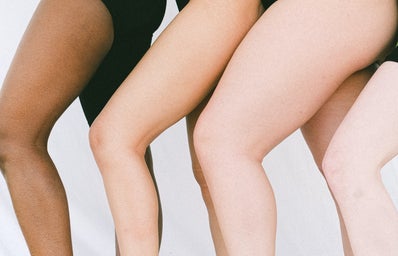During the Colonial era, pale skin and European features were accepted as ideal and fashionable. Beginning in the sixteenth century, slave trading and human trafficking stretched across the Atlantic ocean. According to the National Library of Medicine, “Skin color was a necessary differentiator of types of races of humans in European or Eurocentric race concepts of the eighteenth century…All other attributes included in racial complexes, whether physical, mental, cultural, or psychological, depended on skin color.” Over the next few decades, a pale skin tone reflected a wealthy status, while darker skin and complexions represented exposure to elements and labor.
In 1923, French fashion designer Coco Chanel was photographed with accidental sun-kissed skin. Due to Chanel’s influence and “It girl” status, sun tanning soon became a fashion trend. In the 1940s, it was common for ladies to utilize tea bags as well as UV reflectors with body oil in order to achieve their desired skin color.
However, a sunless tanner made its mark in the 1950s. At Cincinnati Hospital, researcher Eva Wittgenstein discovered that medicinal dihydroxyacetone, commonly referred to as DHA, could tan the outer layer of skin. DHA absorbs into the epidermis, not the bloodstream. In the 1970s, DHA received approval for cosmetic use from the Food and Drug Administration.
As the popularity of self-tanner grew, many companies began adding scents and other ingredients for a longer-lasting tan, such as Erythrulose. While self-tanners may provide glowing, bronzed skin, make sure SPF is included. Otherwise, don’t forget your sunscreen!
We loved Snooki and Paris. Today, we love Kourtney Kardashian and Ariana Grande. Even though bold tans appeared as a trend in the early-2000s and are still appreciated by A-list celebrities today, do not deepen your skin tone to an offensive shade.
My first experience of trying self-tanner at home made me never want to DIY again and stay inside so no one could see the splotches and streaks on my skin. It was embarrassing! As I have done more research for the best pre-tan routine and products for me, I am proud to say I appreciate a little sun-kiss on my face and body before I head out to class. For me, it is a little confidence boost that reminds me of being on vacation while at work in the UMC basement. But I also understand that sometimes self-tanning can go way too far.
Many self-tanning products are marketed as “natural.” But that doesn’t necessarily mean natural for everyone. For individuals with fair skin, a good way to prevent an abnormal shade after your tan finishes developing is to begin with a light shade in the first place. Oftentimes, you can layer from there so that you have a choice if you want to appear a little more bronzed. If you use a color that contrasts a great deal from your true skin tone, your skin will appear orange.
Cultural appropriation is the inappropriate adoption of elements from one culture or identity. Wearing another culture as a costume is disrespectful because it is harmful to the original culture contexts. A great way to avoid cultural appropriation while using self-tanning products is to start small, get educated on the influences of trends in pop culture, and be open to conversations with your community about different cultures and their experiences.




